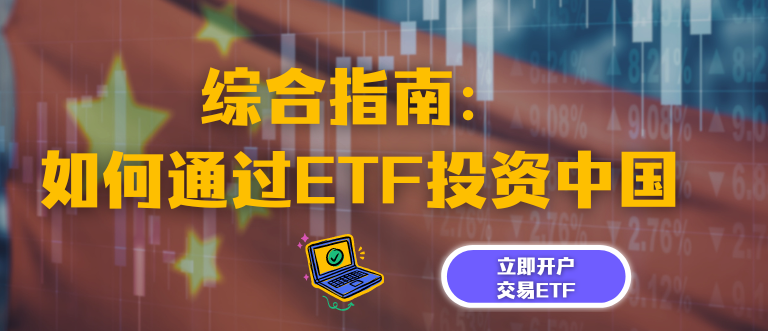Margin stock
Table of Contents
Margin stock
Margin trading enables traders and investors to use leverage to boost their profits on their assets. A specific set of guidelines, including minimum initial margin demands and keeping up margin levels, are specified by the brokerage company for margin trading.
Margin stocks can be a high-risk strategy and require careful consideration and monitoring.
Before using margin to trade, it is crucial for investors to thoroughly comprehend these regulations since failing to comply with them might result in the forced selling of stocks to cover the margin call. Margin stocks often come with a higher level of risk but also the potential for more significant gains.
What is margin stock?
Margin stock refers to borrowing funds from a brokerage firm to purchase securities. Investors can borrow capital from their brokerage to buy securities when they invest in margin stocks. As this funding takes place on margin, only a tiny portion of the investor’s investment is considered a security. The broker provides the remaining funds. This enables investors to increase the return on their assets by using leverage. But it also puts them at greater risk.
Understanding margin stock
In general, understanding the meaning of margin is crucial for understanding margin stocks. When an investor borrows money from their broker for investing, this is referred to as a margin deposit. The margin requirement is often indicated as a proportion of the overall investment. For example, if the required margin is 50%, the investor would have to put up half of the whole investment value as collateral. The broker lends the remaining 50%.
Investing in margin stocks can be a double-edged sword. On one side, it allows investors to leverage their assets to increase their profits. On the contrary, if the stock price falls, the losses may also increase. In reality, the investor can be vulnerable to a margin call if the stock price drops below a predetermined threshold known as the maintenance margin. He would thus need to add more money to his account to achieve the maintenance margin requirement. Otherwise, he would run the danger of the broker liquidating his holdings.
Calculation of margin stock
To calculate the margin required for a stocks purchase, you need to follow the following steps:
- Firstly determine the initial margin requirement set by your broker. This is usually a percentage of the total value of the securities being purchased.
- Multiply this percentage by the total value of the stocks to calculate the initial margin amount.
- Subtract the initial margin amount from the total value of the stocks to find the loan value.
- Divide the loan value by the initial margin amount and multiply by 100 to calculate the margin percentage.
Workings of a margin account
A margin account is required to trade on margin. This differs from a typical cash account, where trading is done using the funds in the account. When you open a margin account, you deposit money that will be used as security for a loan to buy stocks or securities. With this, you may obtain a loan for up to 50% of the investment’s acquisition price. Therefore, if you invest US$15,000, you can purchase up to US$20,000 worth of stocks.
Margin trading is governed by the Securities and Exchange Commission, or SEC, and the Financial Industry Regulatory Authority, or FINRA, which have strict guidelines about how much you must deposit, how much you may borrow, and how much you must maintain in your account at certain times.
Example of a margin stock
One real-world example of margin stocks is when an investor borrows money from the broker to purchase shares of a particular company. The investor can trade the shares at a gain if the stock increases in value, pay back the loan, and retain the profit as return. However, if the stock price drops, the investor could have to liquidate the shares at a loss to repay the loan.
Imagine X made a US$10,000 deposit to his margin account. This implies that he has an equivalent purchasing power of US$20,000 due to his 50% down payment. In that case, he remains with US$15,000 of purchasing power if he buys US$5,000 worth of shares.
So, he has the necessary cash to complete this purchase and hasn’t used any of his margins. He begins borrowing money only when his purchase shares are valued at more than US$10,000.
Frequently Asked Questions
A “margin account” is a particular kind of brokerage account where the broker-dealer loans the investor money to buy securities while employing the account as collateral. While margin gives investors more purchasing power, it also exposes them to the possibility of losses.
The main benefit of using margin is the potential to leverage your assets to boost earnings when the value of your holdings shifts in your favour. Additionally, If you have a concentrated stock position in your account, margin purchasing allows you to diversify your portfolio by utilizing the margin buying power.
One major limitation of margin stock is the risk involved. Margin trading amplifies gains and losses, so if the price of the stock purchased on margin declines, the investor may be forced to sell at a loss to repay the borrowed funds.
Additionally, margin accounts require investors to maintain a minimum level of equity, known as the maintenance margin. Failure to meet this condition can result in a margin call and potentially lead to the forced liquidation of securities in the account. Therefore, it is essential for investors to cautiously analyse their financial situation and risk tolerance before engaging in margin trading.
Buying on margin increases investors’ buying power and potentially generates higher returns. The process involves the investor putting up a percentage of the total purchase price, known as the initial margin, while the remaining amount is borrowed from the broker.
The investor then holds the stocks as collateral for the loan. It is important to note that buying on margin involves risk, as any decline in the value of the stocks can result in a margin call, requiring the investor to either deposit more funds or sell some of the securities to cover the losses. Overall, buying on margin can be helpful for experienced investors, but it requires careful consideration and understanding of the risks involved.
The primary risk of purchasing on margin is that you might lose many more funds than you initially put in. A decrease of at least 50% in equities partially financed with borrowed money results in a loss of at least 100% in your portfolio, including interest and fees.
Related Terms
- Market maker
- Options expiry
- Payment Date
- Treasury Stock Method
- Reverse stock splits
- Ticker
- Restricted strict unit
- Gordon growth model
- Stock quotes
- Shadow Stock
- Dedicated Capital
- Whisper stock
- Voting Stock
- Deal Stock
- Microcap stock
- Market maker
- Options expiry
- Payment Date
- Treasury Stock Method
- Reverse stock splits
- Ticker
- Restricted strict unit
- Gordon growth model
- Stock quotes
- Shadow Stock
- Dedicated Capital
- Whisper stock
- Voting Stock
- Deal Stock
- Microcap stock
- Capital Surplus
- Multi-bagger Stocks
- Shopped stock
- Secondary stocks
- Screen stocks
- Quarter stock
- Orphan stock
- One-decision stock
- Repurchase of stock
- Stock market crash
- Half stock
- Stock options
- Stock split
- Foreign exchange markets
- Stock Market
- FAANG stocks
- Unborrowable stock
- Joint-stock company
- Over-the-counter stocks
- Watered stock
- Zero-dividend preferred stock
- Bid price
- Authorised shares
- Auction markets
- Market capitalisation
- Arbitrage
- Market capitalisation rate
- Garbatrage
- Autoregressive
- Stockholder
- Penny stock
- Noncyclical Stocks
- Hybrid Stocks
- Large Cap Stocks
- Mid Cap Stocks
- Common Stock
- Preferred Stock
- Small Cap Stocks
- Earnings Per Share (EPS)
- Diluted Earnings Per Share
- Dividend Yield
- Cyclical Stock
- Blue Chip Stocks
- Averaging Down
Most Popular Terms
Other Terms
- Direct market access
- Deficit interest
- Strong order book
- Economic calendar
- EPS forecast
- Fiat money
- Adjusted distributed income
- International securities exchanges
- Settlement currency
- Federal funds rate
- Active Tranche
- Convertible Securities
- Synthetic ETF
- Physical ETF
- Initial Public Offering
- Buyback
- Secondary Sharing
- Bookrunner
- Notional amount
- Negative convexity
- Jumbo pools
- Inverse floater
- Forward Swap
- Underwriting risk
- Reinvestment risk
- Final Maturity Date
- Secondary Market
- Margin Requirement
- Mark-to-market
- Pledged Asset
- Yield Pickup
- Subordinated Debt
- Trailing Stops
- Stochastic Oscillator
- Bullet Bonds
- Basket Trade
- Contrarian Strategy
- Exchange Control
- Notional Value
- Relevant Cost
- Dow Theory
- Speculation
- Stub
- Trading Volume
- Going Long
- Pink sheet stocks
- Rand cost averaging
- Sustainable investment
- Stop-limit sell order
- Economic Bubble
Know More about
Tools/Educational Resources
Markets Offered by POEMS
Read the Latest Market Journal

继前一篇我们介绍了越南市场后,接下来我们将介绍泰国市场,泰国的表现一样引人瞩目。 受结构性问题影响,相较于菲律宾、马来西亚、印度尼西亚和越南,2023年,泰国全年GDP增幅远低于其他国家。泰国2023年GDP同比2022年增长1.9%,低于市场预测的2.5%。 2023年,中国-东盟自贸协定零关税给泰国带来了直接且沉痛的打击。由于消费疲软、贸易壁垒等政策影响,产能过剩,导致大量低价进口中国商品涌入,使得2023年泰国与东盟9国的总贸易额出现了3年来的首次下滑,其总贸易额为4万亿泰铢(约1489亿新元)。由于巨大的成本价格差异,其中泰贸易逆差扩大至1.29万亿泰铢(约480亿新元)。其中,小家电、蔬果、箱包和服装行业处境最为艰难。 尽管如此,旅游业的复苏增长带动了非农业产业的增长。政府数据显示,2023年来访泰国的总人数达3.15亿人次,较去年增长40.3%。其中,国际游客超过2800万人次,马来西亚和中国为最大客源。随着泰国对中国和哈萨克斯坦实施免签政策和其他活动措施,预计2024年将带来更多游客,推动泰国旅游业的复苏进程,并力争实现2024年旅游营业收入达到3.5亿泰铢(约0.12亿新元)的目标。 热销股票 1. ADVANCED INFO SERVICE PUBLIC CO., AIS,AIS通信(ADVANC.TH) AIS通信是泰国的最大移动运营商,主要经营三大业务线,包括移动业务、AIS Fibre品牌下的高速家庭宽带业务,以及企业业务。同时AIS也提供多样化的数字生活服务。AIS通过数字智能基础设施、跨行业合作和人力资本与可持续发展这三方面,致力于“成为泰国最受尊敬的认知科技公司”的愿景。 (来源:AIS2023财年年报)...

指数差价合约是区别于投资个股、指数期货或交易所交易基金(ETF)的一种热门替代品,因为该工具允许您获得特定指数的风险投资组合,并从柜台价格走势中获益,无论做多或做空。此外,由于差价合约的杠杆特性,交易者只需拿出合约价值的一小部分作为初始合约的抵押品即可启动一笔合约。这样,交易者就可以方便快捷地进行整个市场的交易。 本期重点摘要: 股票指数只是一组资产的集合,它概括了股市中某一行业板块的表现。许多此类指数根据不同的标准包含和/或排除某些股票。 指数差价合约有助于利用构成单一指数的各种股票分散您的投资组合、实现投资组合多样化。这也有助于避免 “选择悖论”:指数帮助您决定投资哪些股票。 最重要的是,指数差价合约让交易者获得对指数的接触,而不用购买组成指数的个股。这种具有成本效益的策略让您只需交易指数的价格变化,而无需拥有相关指数本身。 什么是股票指数? 当人们说 “今天市场上涨了 “或 “市场下跌了 “时,你会不会好奇,分析师是如何评估整个市场? 这很简单,他们只需分别将按照今天的报价和昨天的报价购买所有公司所需的金额相加。两相比较下,如果发现今天的数字大于前一天的数字,那么我们就知道今天的市场上涨了,反之亦然。然而,数字的汇总和对比可能会很繁琐和麻烦。创建指数就是为了方便测量。 因此,”股票指数 “一词指的是一组股票(或其他资产)的集合,它提供了股票市场特定部分表现的概况。该指数被用作一个替代指标,用来衡量市场在特定时间段内的涨跌情况,比如以上例子中所描述的逐日指数。...

本文旨在为中级外汇交易者提供必要的信息和知识。它将涵盖我们上一篇文章 “五分钟看懂世界上最活跃的市场-外汇差价合约(FX CFD)...

解锁台湾股市的投资潜力!深入了解由强大的技术驱动型经济推动的股票市场,2023 年机械和电气设备将占出口的 69%。在政治稳定、投资者友好的法规和健全的法律框架下,探索台积电和富士康等全球顶级企业。台湾股市值得称赞的历史表现和在国际贸易中的的重要性使其更具吸引力。在这个科技实力雄厚、经济稳定、充满活力的股票市场中,抓住增长机遇!

了解外汇市场 外汇交易市场又称外汇市场,是一个买卖货币的全球性金融市场。它是全世界规模最大、流动性最强的金融市场,每日交易量超过 6 万亿美元。但外汇市场有一个重要却常被忽视的一点,就是它受交易心理的影响。在本文中,我们将探讨外汇市场的复杂性,还有把重点放在交易心理与传统交易策略共同发挥的关键作用...

五分钟看懂世界上最活跃的市场 -外汇差价合约(FX CFD)
外汇交易市场俗称外汇或外汇市场,是全球金融市场的支柱。它是世界上最活跃的市场,2022 年 4 月,全球交易额达到创纪录的每天 7.5 万亿美元[1] 。这个活跃的市场为交易者提供了利用货币价格波动赚取利润的机会。在本文中,我们将解释外汇市场的基本原理,助您了解其投资机制。 什么是外汇? 外汇市场是一个分散的全球市场,世界上所有货币都在这里进行交易...






















